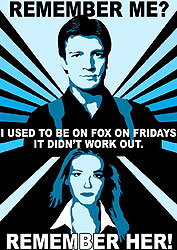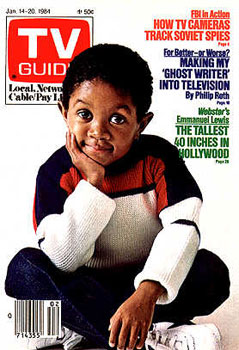TV Is Dead, Long Live TV: October 5, 2012
Published on October 5th, 2012 in: Science and Technology, Streaming, The Internets, TV, TV Is Dead Long Live TV |Here is our second installment of our ongoing series on the life and death of linear television, a.k.a. old-style appointment television, TV that only moves forward in time. For previous installments, go here.
Remember that show that you really like that was cancelled by Fox? It doesn’t matter which one. If it had been cancelled today, the creators now have the very profitable option of starting a digital only subscription channel and allowing you to pay for the content you want, instead of letting Fox television executives decide weather your favorite programs live or die.

NPR broke the story last month that The Blaze TV.com made $40 million dollars last year with its 9 million subscribers. This subscription -only digital TV channel belongs mostly to Glenn Beck, whose fans followed him after his show was cancelled by Fox. Sure, the cancellation of Glenn Beck caused marginally more controversy than the cancellation of say, Firefly or Angel, giving Beck a slight edge in keeping his fans loyal as he jumped into the digital realm, but that’s only a slight edge. Now that the figures on profitability are out in public, there’s not a doubt in my mind that the next premature cancellation of a fan favorite will re-launch as a digital feed for those willing to pay.
As I put forward in my earlier article, fans are now financing and gaining more control over the television they watch. The major reason for the shift from linear television to Internet television is the fan’s ability to choose what they want to watch, when they want to watch it. This shift in control of the television-viewing environment is changing the business of how what we choose to watch is created, marketed, and distributed. Beck’s nine million fan faithful move to watch him on internet television has happened concurrently with another television milestone: the expansion of sports content to its own digital channels.
You can now watch every major sport in America (except the NFL: More about the NFL exception will be discussed in a future article) without the assistance of network or cable providers. Traditionally, as go sports fans, so goes television. The first broadcast of the first major cable station was a hockey game—HBO’s coverage of the Rangers playing the Canucks at Madison Square Garden in 1972. Four years later Turner Communications Group turned Atlanta Station 17 into the first superstation in 1976. Children of the early 1980s will remember endless commercials for Braves games, which brought in the highest ratings for TBS.

Click for larger image:
TV Guide didn’t have cable listings in 1976,
because most Americans had no access to cable television.
I’d like to put myself out on the predictive limb here and say that this Christmas will be the holiday season that turns the tide from linear television (network and cable) to Internet television for good. Sales of the Roku box—the easiest way for most to connect to Internet television content—have been steadily rising, and with all sports but NFL on the table, there’s little reason for viewers to continue to pay for hundreds of channels they don’t want. In an interview with Venture Beat in June, Roku CEO Anthony Wood said, “Over the next year, all the major cable networks and operators will be on Roku,” and that, my friends, is the final nail in the linear television coffin.
While network television will continue to have a nightly “line up” and “schedule,” once the content is available whenever you want it for a small fee, none of that matters anymore. In the same article where Anthony Wood tells us all the major cable networks will soon be available on Roku, he tells us that about 20 percent of Roku users cut back on their cable subscriptions, and 20 percent cut the cord altogether. I’m betting the number of people who cut back or cut entirely cable increases as their favorite shows become available via Roku.
I also think linear television will live on in ever diminishing form for another decade or two. Think about daytime soap operas as an analog to network television: the audience will age, tastes will change, and one day, it just won’t make as much money as it used to—and then, the shift will happen. Just like sands through the hourglass, there will be no announcement of a Thursday prime-time lineup, just ads on HuluPlus for that funny new sitcom with that one comic from that stand up special everyone likes.

This 1984 cover shows that this edition of TV Guide
includes Local, Network, & Cable/Pay Listings.
There are lots of people who think I am wrong about the incipient rise of Internet TV and the downfall of linear television. Back in May, The Mary Sue ran a great article on the FCC’s report that only half of American households with Internet service have enough speed to watch Netflix or other streaming content. When one considers the historical availability and spread of cable television, however, these access numbers seem less significant. Let’s break down the math a bit, shall we?
According to the last census, there are around 311 million Americans, and 68 percent of those have Internet at home. That’s 211,480,000 (or so) Americans with Internet, half of whom can watch streaming content—an audience of over 105 million.
Most Americans over 30 are old enough to remember when cable access first came to their neighborhood, or when they first moved in to a house or apartment with cable. In 1979, cable television had just 16 million households as subscribers. If I can hazard an educated guess, I’d say streaming-only television has easily twice that many viewers today. Like the spread of cable television in the 1980s, this decade will see the spread of broadband television to its inevitable conclusion—availability nearly everywhere.
Network and local television channels ran the ad below to protest the 1972 lifting of FCC restrictions on the broadcast of sports and other content by pay providers.
Time limit is exhausted. Please reload the CAPTCHA.